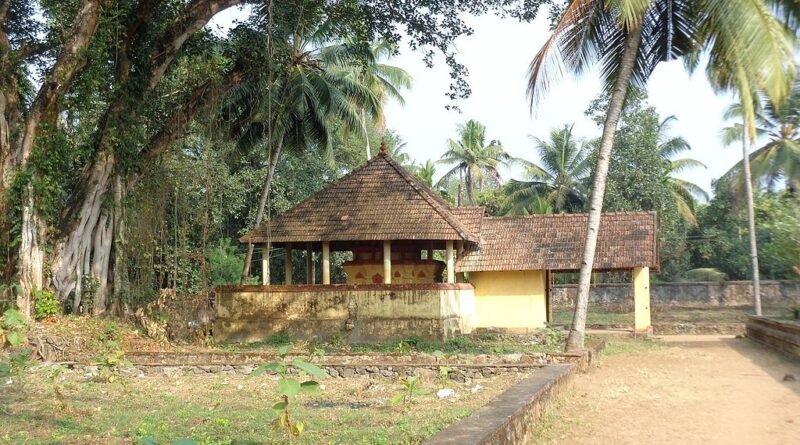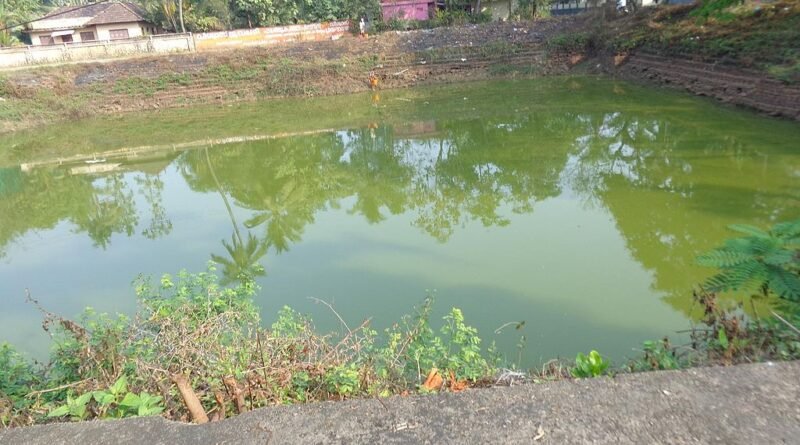Thrichittatt Maha Vishnu Temple
The Thrichittatt Mahavishnu Temple (also called Thiruchenkundrur and Imayavarappan temple) is a Hindu temple dedicated to Vishnu,located in Chengannur, Alappuzha District, Kerala, South India. Constructed in the Kerala style of architecture, the temple is glorified in the Nalayira Divya Prabandham, by Nammalvar, one of the Sri Vaishnava saint-poets of the 8th century called the Alvars. It is one of the 108 Divya Desams dedicated to Krishna, an avatar of Vishnu, who is worshipped as Imayavarappan. The nearest railway station to the temple is located in Chengannur, while the nearest airports are Trivandrum International Airport and Nedupumpassery Airport Ernakulam.
It is one of the five ancient shrines in the Chengannur area of Kerala, connected with the legend of Mahabharata, where the five Pandavas are believed to have built one temple each; Thrichittatt Maha Vishnu Temple by Yudhishthira, Puliyur Mahavishnu Temple by Bhima, Aranmula Parthasarathy Temple by Arjuna, Thiruvanvandoor Mahavishnu Temple by Nakula and Thrikodithanam Mahavishnu Temple by Sahadeva.
The temple is open from 5:00 am to 11:00 am and 5:00 pm to 8:00 pm and is administered by Travancore Devaswom Board of the Government of Kerala.
Legend
It is one of the five ancient shrines in the Chengannur area of Kerala, connected with the legend of Mahabharata. Legend has it that the Pandava princes, after crowning Parikshit as king of Hastinapura left on a pilgrimage. On arriving on the banks of river Pamba, each one is believed to have installed a tutelary image of Krishna; Thrichittatt Maha Vishnu Temple by Yudhishthira, Puliyur Mahavishnu Temple by Bhima, Aranmula Parthasarathy Temple by Arjuna, Thiruvanvandoor Mahavishnu Temple by Nakula and Thrikodithanam Mahavishnu Temple by Sahadeva.During the Kurukshetra War, Yudhishthira, the eldest of the Pandavas, who never before uttered a lie, lied in one instant to defeat his guru, Drona. To overcome the sin of the lie, according to this temple’s regional legend, he underwent penance worshiping Vishnu here. The (devas) came to this place prior to Yudhishthira and hence the deity here is referred as Imayavarappar.
There is another version that the Pandavas worshipped the idols during the reign and started installing them in different places during the end of the reign.
Thiruchittattu temple, is considered to be one among the 108 most sacred place of worship, where it is believed Vishnu himself resides.
The temple is believed to have been built by devas along the banks of Chittar, a tributary of holy river Pampa, before mankind was born. The temple, was then renovated, by Yudhishthira in Dvapara Yuga. The temple is considered to be the primary temple among the five Mahavishnu Temples built by Pandavas.
In Dvapara Yuga, the Pandavas resided at present day Chengannur for a large duration of their exile, hence, after the passing of deity Krishna, Sage Bhrigu persuaded the Pandavas to consecrate four sacred temples in the vicinity, to the deity, who was their guide and protector in Mahabharata
This would allow daily offerings and pooja to be carried out on the benevolent deity, in the form of the Thevaram, not only by Pandavas but also all the people who helped Pandavas survive during the exile. The Pandavas, maintained and performed puja in the five temples till their svargarohanam (Auspicious journey to Vaikuntham)
Yudhishthira on renovation of the temple, installed the Thevara Moorthy of Vishnu with a tutelary image of the deity Krishna. This unique idol, is facing east in a standing posture, with four arms, holding the – Panchajanya (conch) in the upper right hand, Sudarshana Chakra (discus) in the upper left hand, and a lotus in the lower right hand. The lower left hand is free, however Vishnu idols generally have the Kaumodaki (mace) in this hand.
Yudhishthira after having a holy bath, installed the idols after immersing it in the Pushkarani (Pond), filling the Conch with its water and performed the first Pooja after installation
Hence, the pond at Thrichittat is named as – Amurtha Pushkarani, since the idol was immersed in it and as – Shankha Tirtham, on the occasion of the pond’s water filling the Conch, therefore, worshipping at Shankha Tirtham, is considered equivalent to that of Sree Kovil (Sanctum Sanctorum of the Temple), and full darshanam is complete when both places are worshipped
History
Earliest references to this temple appear in the poems and hymns composed by the greatest of Alvar saints – Nammalvar, in circa 800 CE. Stone inscriptions in the temple date it back to the Second Chera Empire (800 – 1102 CE).In modern times, the temple is administered by Travancore Devaswom Board of the Government of Kerala.There are no historical records to indicate when the temple was built. As per local legend, the temple was believed to have been built by devas.
















